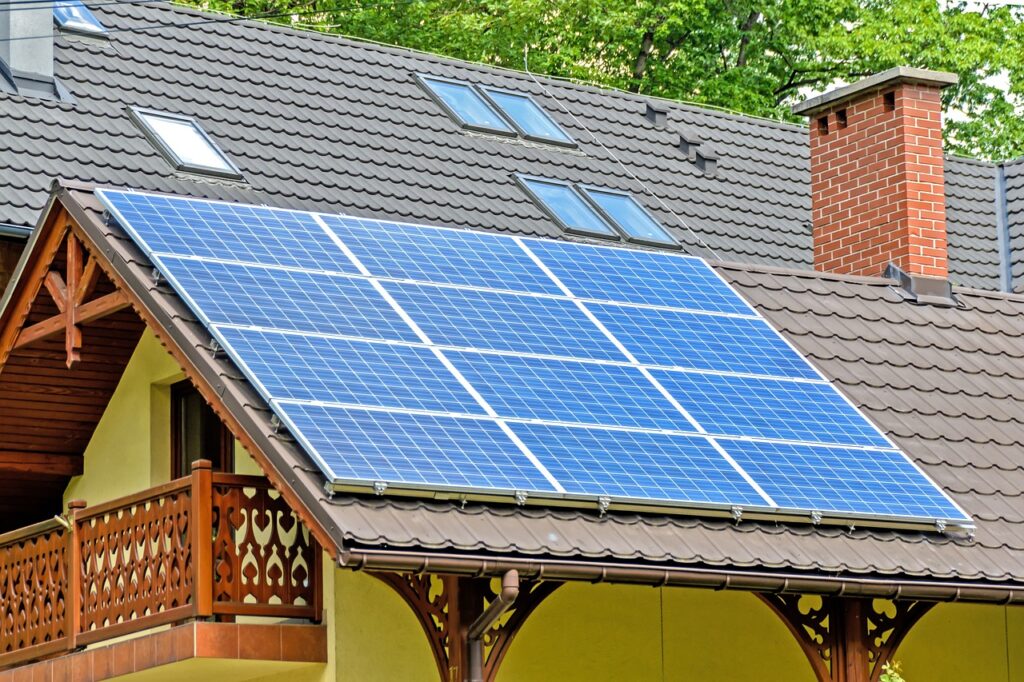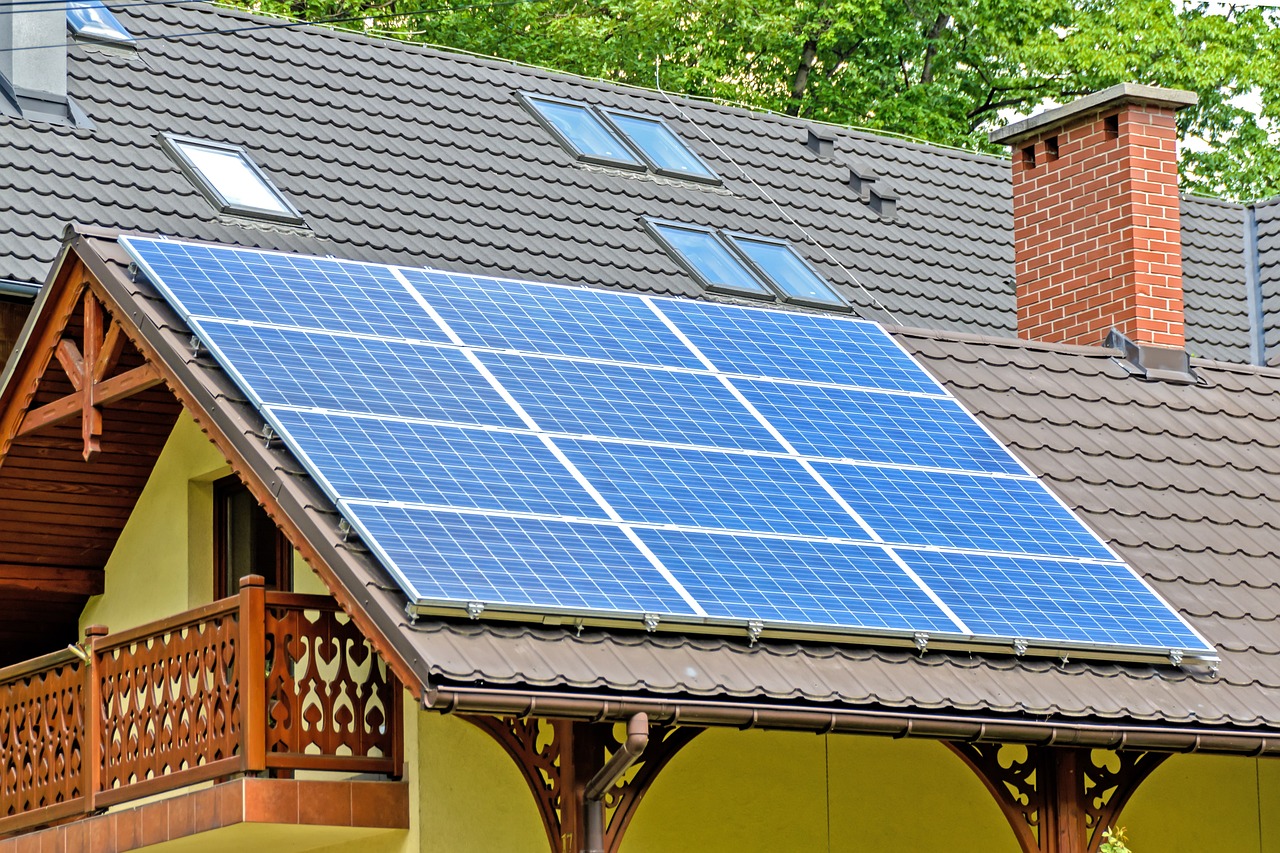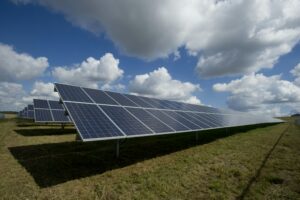We explore the fascinating world of renewable energy sources and provide an insightful comparison of solar energy to its counterparts. Solar energy, harnessed from the radiant light and heat emitted by the sun, has captured the attention and imagination of scientists, environmentalists, and forward-thinking individuals around the world. In this article, we examine the various aspects of solar energy and its unique attributes, highlighting how it stacks up against other renewable energy sources. Join us as we embark on an illuminating journey into the realm of sustainable power generation.

Cost-effectiveness
Initial costs
Solar energy has become increasingly cost-effective in recent years, with the initial costs of installing solar panels steadily decreasing. Advances in manufacturing technology and economies of scale have contributed to this trend, making solar energy a viable option for both residential and commercial applications. While the upfront investment may seem significant, it is important to consider the long-term savings and benefits that solar energy can provide.
Maintenance costs
One of the key advantages of solar energy is its low maintenance requirements. Once the solar panels are installed, they generally require minimal upkeep. Routine inspections and cleaning are usually all that is required to ensure optimum performance. Compared to other renewable energy sources, such as wind turbines or hydroelectric power plants, solar energy has considerably lower maintenance costs, saving both time and money in the long run.
Life-cycle costs
Solar energy has a favorable life-cycle cost profile. While the initial investment in solar panels may seem substantial, the savings that can be achieved over the system’s lifetime make it a cost-effective choice. With proper maintenance and regular inspections, solar panels can last for several decades. Additionally, advancements in technology have improved the efficiency and durability of solar panels, enhancing their overall longevity and reducing the need for replacement or costly repairs.
Availability
Sunlight availability
Solar energy is reliant on sunlight availability, but fortunately, sunlight is abundant in many regions around the world. While areas with less sunlight intensity may experience reduced energy production, technological advancements have made it possible for solar panels to effectively generate electricity even in cloudy or overcast conditions. Plus, solar energy can still be harnessed during daylight hours, making it a sustainable and reliable source of energy in most locations.
Geographical limitations
While solar energy can be harnessed in many parts of the world, there are certain geographical limitations to consider. Regions with high latitudes or prolonged periods of darkness, such as the polar regions, may not be ideal for solar energy production. Additionally, areas with frequent heavy cloud cover or significant shading from buildings or trees may experience reduced energy output. However, with careful planning and placement of solar panels, these limitations can be mitigated, and solar energy can still prove to be a viable option in a wide range of geographical locations.

Environmental Impact
Carbon footprint
Solar energy is widely recognized as a clean and renewable energy source, as it produces minimal greenhouse gas emissions during operation. By harnessing the power of the sun, solar panels convert sunlight into electricity without burning fossil fuels or releasing harmful pollutants. This significantly reduces the carbon footprint associated with energy generation, making solar energy a crucial contributor to mitigating climate change and ensuring a sustainable future for our planet.
Land use
Compared to other renewable energy sources like wind or hydroelectric power, solar energy requires relatively less land for installation. Roof-mounted solar panels can utilize existing structures without any additional land requirements. In cases where ground-mounted solar arrays are installed, they can be positioned on unused or underutilized land, such as abandoned industrial sites or agricultural fields. This allows for the dual use of land, minimizing the impact on natural ecosystems and preserving valuable land resources.
Water use
Unlike many traditional energy sources, solar energy does not require significant water consumption for its operation. Unlike coal, natural gas, or nuclear power plants, which rely on water for cooling purposes, solar panels generate electricity without the need for large quantities of water. This is particularly beneficial in regions prone to water scarcity or droughts, as solar energy can help alleviate pressure on water resources and contribute to more sustainable water management practices.
Energy Efficiency
Conversion efficiency
Solar energy conversion efficiency refers to the percentage of sunlight that is successfully converted into usable electricity. Over the years, there have been significant improvements in solar panel efficiency, with modern panels achieving high levels of conversion efficiency. While technological advancements have increased the efficiency of solar panels, it is important to note that conversion efficiency can be affected by factors such as shading, temperature, and the angle of the panels. However, with proper design and installation, solar energy systems can still deliver impressive energy conversion rates.
System losses
Like all energy systems, solar energy can experience some losses due to various factors. These losses can occur during the conversion of sunlight into electricity, transmission and distribution, and the storage of surplus energy. However, advancements in inverter technology and grid integration strategies have significantly reduced these losses, ensuring that solar energy systems remain highly efficient. By optimizing system design, utilizing cutting-edge components, and implementing effective energy management techniques, these losses can be minimized, allowing for maximum energy efficiency.

Reliability
Intermittency
One of the primary concerns often raised about solar energy is its intermittency. Since solar energy production relies on sunlight, it is influenced by daily and seasonal variations, including weather patterns and cloud cover. However, with the increasing use of energy storage technologies, such as batteries, the reliance on sunlight availability has been mitigated. Energy storage allows excess energy generated during peak sunlight hours to be stored for later use, providing a consistent and reliable energy supply, even during periods of low or no sunlight.
Storage options
The development of energy storage solutions has revolutionized the reliability of solar energy. Batteries, specifically designed for solar energy storage, enable the capture and retention of surplus electricity generated during the day, ensuring a steady supply of energy even during the night or when sunlight is limited. Advances in battery technology have improved their efficiency, capacity, and lifespan, making them a valuable addition to solar energy systems. These storage options not only enhance the reliability of solar energy but also provide flexibility and grid independence for users.
Scalability
Grid integration
Solar energy systems can be seamlessly integrated into existing power grid infrastructure, allowing for efficient distribution and utilization of solar-generated electricity. In many cases, solar energy can be directly fed into the grid to supplement the overall energy supply. This grid integration offers numerous benefits, including the ability to deliver clean energy to a wider population, facilitate energy sharing among different regions, and balance the intermittency of solar power with other energy sources. With proper planning and coordination, solar energy can be efficiently scaled up to meet increasing energy demands.
Modularity
The modularity of solar energy systems is another key advantage. Solar panels can be easily scaled up or down depending on energy needs and available space. This flexibility allows for incremental installations, making solar energy accessible to a wide range of consumers, from individual homeowners to large-scale commercial and industrial facilities. Whether it is installing a few panels on a residential rooftop or constructing a sprawling solar farm, the modular nature of solar energy systems ensures that they can adapt to diverse energy requirements and grow alongside evolving energy demands.
Job Creation
Employment opportunities
The widespread adoption of solar energy has created significant employment opportunities across various sectors. From manufacturing and installation to maintenance and operation, the solar industry has generated jobs in both skilled and unskilled labor categories. These employment opportunities benefit local communities and contribute to economic growth. Additionally, the expansion of the solar energy sector stimulates innovation and promotes the development of a skilled workforce, ensuring a sustainable job market for the future.
Workforce development
The growth of the solar energy industry has led to the development of specialized training programs and educational initiatives. These programs aim to equip individuals with the necessary skills and knowledge to pursue careers in the solar industry. By investing in workforce development, governments and organizations can ensure that a competent workforce is available to meet the increasing demand for solar energy. This not only creates job opportunities but also promotes technological advancements and strengthens the overall industry.
Technological Advancements
Research and development
Research and development play a crucial role in advancing solar energy technologies. Ongoing research efforts focus on improving solar panel efficiency, reducing manufacturing costs, enhancing energy storage capabilities, and developing innovative materials for solar cells. Governments, universities, and private companies worldwide are investing in research and development initiatives, aiming to accelerate the adoption of solar energy and make it even more efficient and cost-effective. These advancements hold the promise of further reducing the reliance on fossil fuels and driving the transition towards a sustainable energy future.
Innovation potential
Solar energy has immense innovation potential. As technology continues to advance, new breakthroughs and discoveries are expected in the field of solar energy generation, storage, and utilization. Innovations such as transparent solar panels, flexible solar cells, and solar-powered electronics are already emerging, opening up new possibilities for integrating solar energy into everyday life. Further advancements in materials science, nanotechnology, and energy management systems are likely to revolutionize the solar industry, making solar energy an indispensable part of our energy mix.
Government Support
Incentive programs
Governments around the world have implemented various incentive programs to promote the adoption of solar energy. These programs often include financial incentives, such as tax credits, grants, or feed-in tariffs, which encourage individuals and businesses to invest in solar energy systems. By reducing the initial costs and providing financial support, governments aim to stimulate the growth of the solar industry and accelerate the transition to renewable energy sources. These incentive programs contribute to the overall cost-effectiveness of solar energy and make it a more attractive option for consumers.
Policy frameworks
In addition to financial incentives, governments play a crucial role in developing policy frameworks that support the integration of solar energy into existing energy systems. Policies that promote net metering, grid interconnection standards, and streamlined permitting processes simplify the installation and operation of solar energy systems. By establishing clear regulations and standards, governments create a favorable environment for solar energy development and encourage private investments. These policy frameworks provide stability and long-term support for the solar industry, fostering growth and innovation.
Social Acceptance
Public perception
Solar energy enjoys widespread public support and acceptance due to its numerous benefits. As a clean and renewable energy source, solar power is viewed favorably by the general public, who increasingly prioritize sustainable and environmentally friendly solutions. Solar energy’s positive reputation is further strengthened by its ability to reduce greenhouse gas emissions, mitigate climate change, and improve air quality. Public perception plays a critical role in shaping energy policies and driving the demand for solar energy, helping to create a more sustainable and resilient energy future.
Community engagement
Engaging and involving local communities in solar energy projects is essential for their success and acceptance. Community solar initiatives, where multiple stakeholders collectively invest in and benefit from a shared solar energy system, have gained popularity in recent years. These projects not only provide clean energy to participants but also foster a sense of ownership and engagement within the community. By involving local residents, businesses, and organizations in the decision-making process, solar energy projects can address community concerns, ensure equitable access to renewable energy, and strengthen social acceptance.




